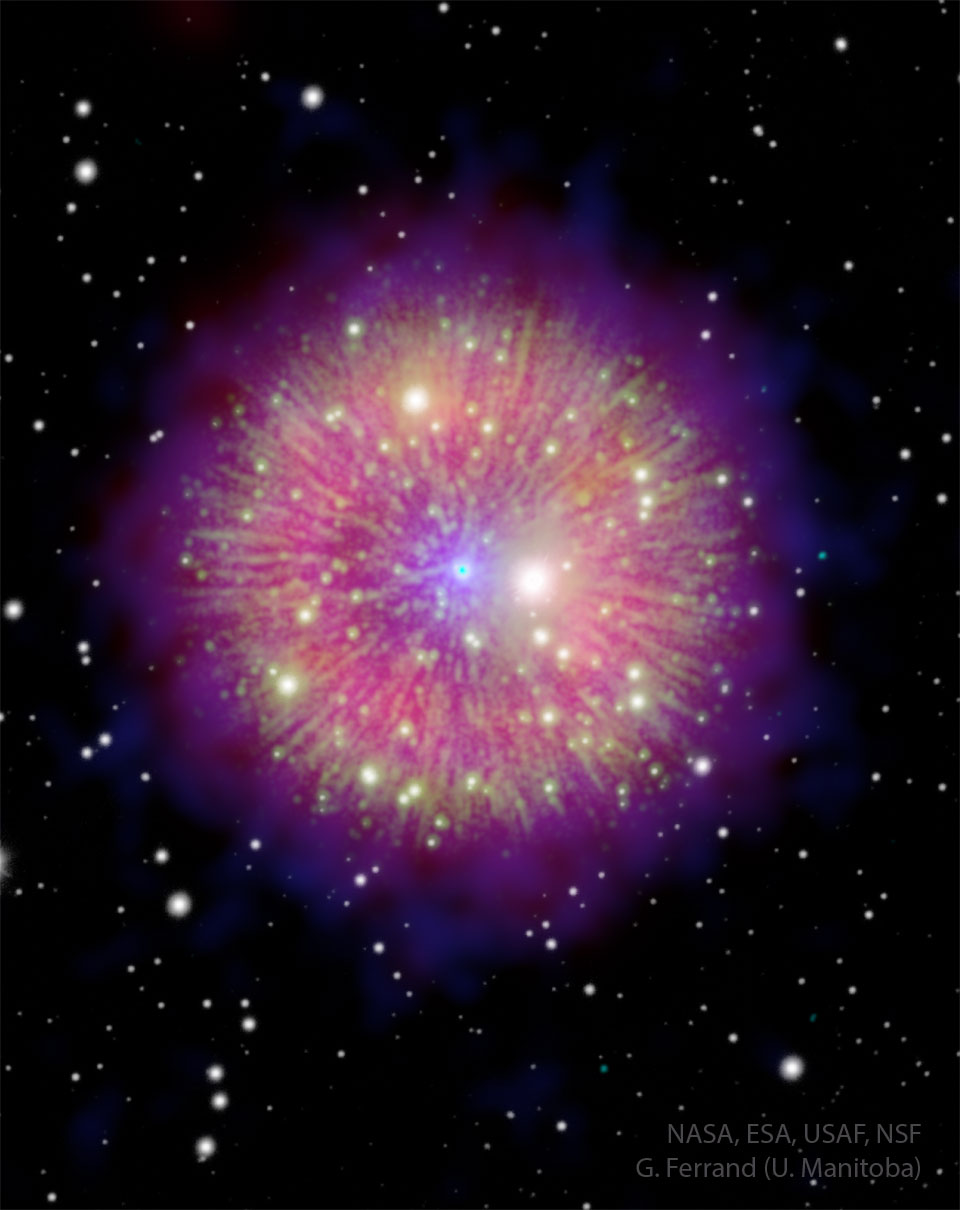不尋常星雲 Pa 30
Unusual Nebula Pa 30

發表日期:2024-04-03
是什麼造就了這個不尋常的天體煙花?這個星雲被命名為Pa 30 ,它現在出現的天空方向與 1181 年一顆明亮的 "客星 "出現的方向相同。雖然Pa 30 的星絲看起來與新星(例如GK Per)和行星狀星雲(例如NGC 6751 )產生的星絲相似,但現在一些天文學家認為它是由一種罕見的超新星產生的:熱核Iax 型,因此(也)被命名為SN 1181 。 在這個模型中,這顆超新星並不是一顆恆星爆炸的結果,而是兩顆白矮星螺旋合併時發生的爆炸。 中間的藍點被假定為殭屍星,即在這次超新星級爆炸中倖存下來的殘餘白矮星。 這張特寫圖片結合了紅外線(WISE)、可見光(MDM、Pan-STARRS)和 X 射線(錢德拉、XMM)望遠鏡獲得的影像和資料。 未來的觀測和分析可能會告訴我們更多資訊。 NASA 報道: 2024 年日全食 4 月 8 日
原文:What created this unusual celestial firework? The nebula, dubbed Pa 30, appears in the same sky direction now as a bright "guest star" did in the year 1181. Although Pa 30's filaments look similar to that created by a nova (for example GK Per), and a planetary nebula (for example NGC 6751), some astronomers now propose that it was created by a rare type of supernova: a thermonuclear Type Iax, and so is (also) named SN 1181. In this model, the supernova was not the result of the detonation of a single star, but rather a blast that occurred when two white dwarf stars spiraled together and merged. The blue dot in the center is hypothesized to be a zombie star, the remnant white dwarf that somehow survived this supernova-level explosion. The featured image combines images and data obtained with infrared (WISE), visible (MDM, Pan-STARRS), and X-ray (Chandra, XMM) telescopes. Future observations and analyses may tell us more. NASA Coverage: Total Solar Eclipse of 2024 April 8
※ 本文由萌芽機器人自動轉貼自每日一天文圖(Astronomy Picture of the Day,APOD),原文為英文,正體中文是透過 DeepL 翻譯及 OpenCC 進行自動處理,內容僅供參考,若有任何錯誤之處還請見諒!
關於每日一天文圖:每日一天文圖網站是美國國家航空暨太空總署與密西根理工大學提供的服務,網站每天提供一張影像或圖片,並由天文學家撰寫扼要說明其特別之處。